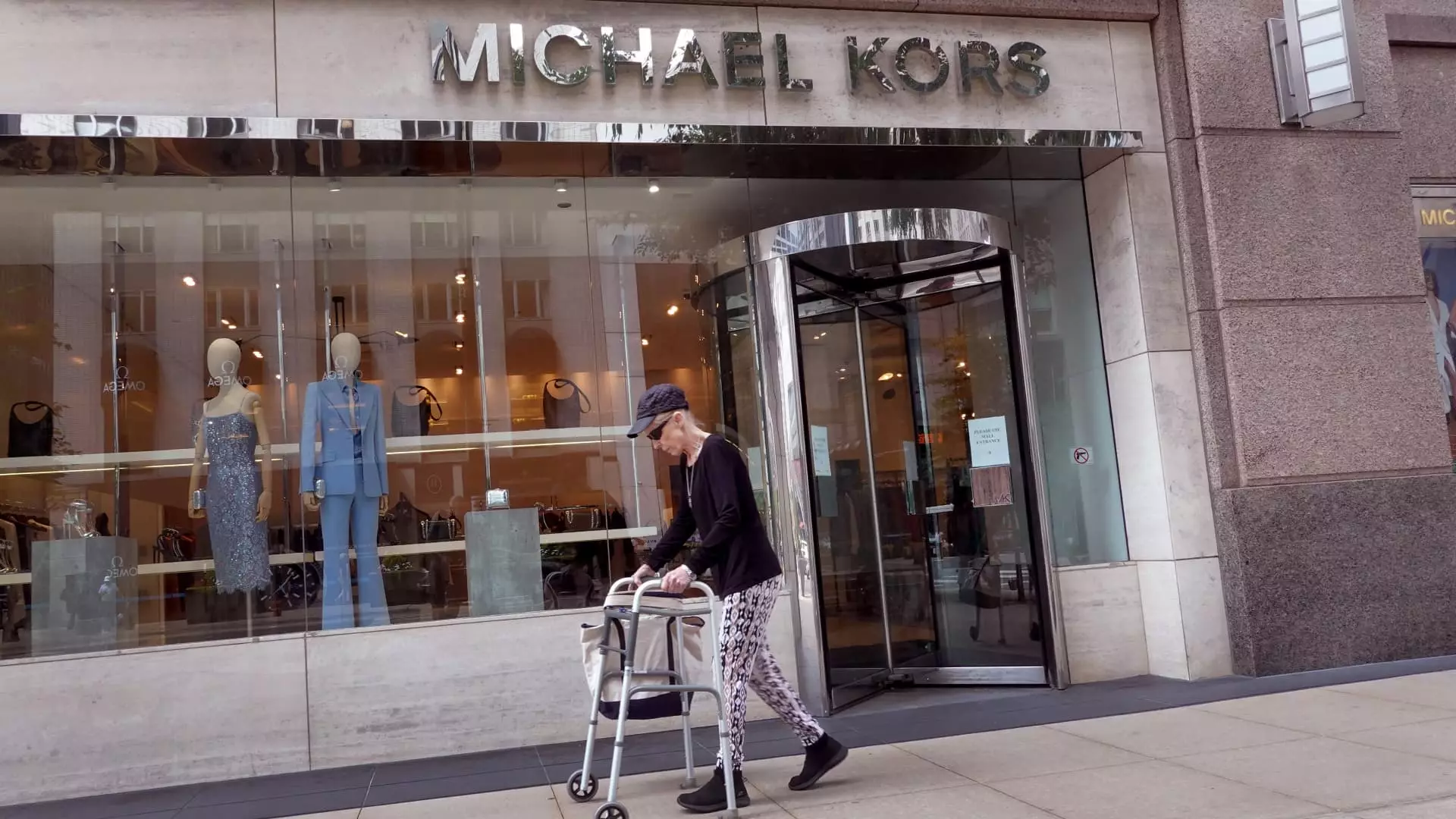In a significant turn of events, luxury brands Capri and Tapestry have annulled their much-anticipated merger, a decision catalyzed by the rigorous scrutiny of the Federal Trade Commission (FTC). Initially announced with much fanfare in August 2023, the merger, valued at $8.5 billion, proposed to unite the assets of two of America’s largest luxury houses, encompassing high-profile brands such as Coach and Jimmy Choo. However, the regulatory framework proved to be a formidable obstacle. Mutual agreement from both companies to terminate the merger signifies not only a defeat in business ambition but also highlights the increasing vigilance of regulatory bodies in safeguarding consumer interests and market fairness.
The FTC’s legal intervention, which emerged in April, was grounded in concerns that the merger would lead to diminished competition, ultimately disadvantaging consumers and further complicating employee conditions across both firms. A more recent ruling favoring the FTC provided the impetus for Tapestry to face the reality that continued pursuit of the merger would likely yield unfruitful results. In the immediate aftermath of the ruling, market reactions were telling—Capri’s stock plummeted by approximately 50%, while Tapestry’s shares benefitted from a surge of about 10%. This contrast underscores the differing market perceptions and the distraught position of Capri following the merger’s collapse.
In the wake of the merger’s termination, Tapestry appears motivated to reassess its strategic direction, emphasizing organic growth over consolidation. CEO Joanne Crevoiserat expressed confidence in the company’s ability to thrive independently. A significant pivot includes a robust $2 billion share repurchase program, showcasing an aggressive strategy to enhance shareholder value. This maneuver not only alleviates the company’s financial exposure related to the failed merger but also reflects a commitment to strengthening Tapestry’s market position without reliance on external acquisitions. The compensatory reimbursement to Capri, amounting to approximately $45 million for incurred expenses during the merger negotiations, further exemplifies the financial complexities that accompany such high-stakes business dealings.
The aftermath for Capri presents significant challenges, particularly as the brand faces an uphill battle to rejuvenate its core business, notably the Michael Kors label, which has been struggling with sluggish sales for an extended period. Capri’s leadership, represented by CEO John Idol, has emphasized an immediate pivot toward implementing strategic initiatives aimed at revitalizing brand desirability and enhancing consumer experiences across various channels. This commitment to innovation is essential if Capri hopes to reclaim its stature within the competitive luxury market.
In a new direction, Capri is focusing on rejuvenating its brand image through captivating marketing campaigns and quality products that resonate with modern consumers. The ongoing communication strategy, alongside improved product offerings, is anticipated to create a fresh aura around Capri’s luxury houses, at a time when digital engagement and omni-channel experiences are paramount in the retail landscape.
The termination of the Capri-Tapestry merger does not merely reflect the fate of two companies; it sends ripples throughout the luxury sector. Industry insiders and analysts will be closely monitoring the dynamics following this dissolution. Consumers and workers, often the uncaptured stakeholders amid such high-level negotiations, are likely to benefit from enhanced competition as brands strive to offer distinctive products and experiences. Moreover, the challenges posed by regulatory scrutiny will compel luxury houses to reconsider their strategies concerning mergers and acquisitions.
The unraveling of the Capri-Tapestry merger serves as a profound reminder of the complexities inherent in the luxury market landscape and the vital importance of strategic agility. As both companies chart their future courses, their experiences can offer valuable lessons to others in the industry regarding growth, competition, and the pivotal balance of innovation and regulatory compliance.

